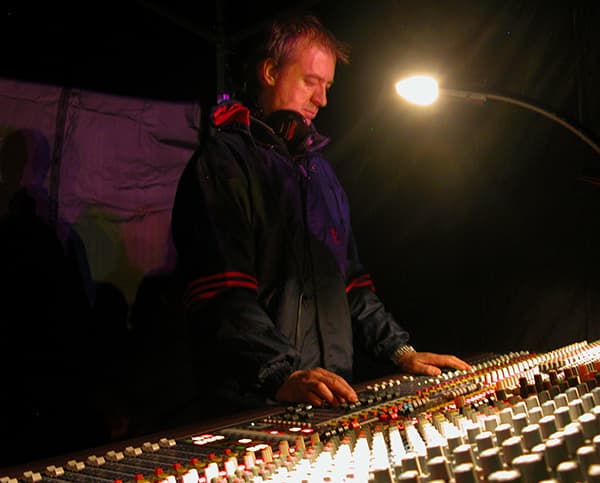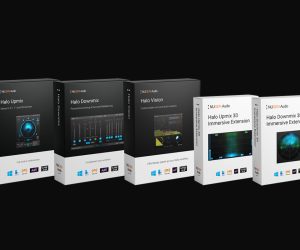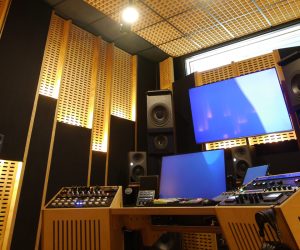
Live Mixing Techniques: Bruce Johnston
In Part B of our interview with Bruce Johnston, we delve further into what makes his live shows tick.
Text: Andy Stewart
Last issue, Australian live sound engineer, Bruce Johnston, talked the leg off a floor tom as he recounted a mic cabinet’s worth of stories from his illustrious mixing career. This issue Bruce delves further into his own working methods and mix philosophies, to reveal more of his famously idiosyncratic and iconoclastic techniques. So without further ado, let’s head straight to front-of-house and get it straight from the horse’s mouth. Bruce… take it away.
LEAVING YOURSELF WIDE OPEN
Bruce Johnston: As I might have said last issue, the very first gig I mix for a band tends to be the best sound I ever pull for them – often-times I don’t know who they are or what type of music they play, and as a result my ears tend to be ‘wide open’. I don’t have any preconceptions; I don’t know how they’ve previously been mixed and I’m generally a little bit nervous. Somehow that produces my best work.
I’m not sure exactly why that is, or how this observation might help others, but basically my mixing technique is all about ‘the vibe’, so I guess that makes me a bit different to most other live engineers. Others tend to be what I call ‘tone guys’. These guys (and girls) often create great-sounding mixes, but what they sometimes lack – from my perspective at least – is a sense of melody and movement. I tend to sit in the audience at these gigs going, ‘Well, that sounds great, but what’s going to happen now?’ But hey, each to their own.
In reality, my approach is essentially the opposite of this. I’m all about the moment of a mix. Consequently, I might have the best gig in the world one night and the worst gig the next. It’s not necessarily the most consistent approach going around, but unfortunately some things come at a cost.
CHANGING THE FORMULA
Other than using a lot less effects than I did in the ’80s, I’ve essentially never deviated from the formula I’ve used since my early mixing days. For example, I still always tune the PA with my vocal and a Shure Beta 58a (I used an SM58 in the ’80s) – never with a CD. In the end the gain and tone of the PA are all about how the vocal sounds. I always make sure a PA is balanced somewhere between sounding right vocally and managing any little nasties that present themselves. This is particularly important when you’re mixing loud. In that situation you’ve got to have those nasties out of the PA! Funnily enough, the curve I usually end up with on a graphic EQ looks pretty much the same as it did in 1981. It’s a little different in the top end of course, thanks to the marked improvement in horn technology over the years, but by and large my EQ tends to have a ‘V’ around 160Hz, a ‘V’ at 500Hz, a little bit of a bump at 2kHz and another ‘V’ at 4kHz. I hate 4k; if anyone sees me mixing you’ll always see 4k pulled out.
One particular trap I often see people falling into is over-EQ’ing a PA. When I walk into a festival and see a really radical EQ I’ll always flatten it and find my own curve. The tendency amongst engineers is to think that a system EQ will always be different because venues all look different. But as a general rule, when a room is full, a particular PA will basically sound the same, no matter where you install it. Experience has taught me over the years that if you walk into a venue and it’s all glass windows and doors, you may as well wait until 2000 people show up. Once they’re in, the PA will sound exactly like it did the night before in a pub that had no glass. I’ve been as guilty as the next person of over-EQ’ing PAs over the years, but as time has gone by I’ve learnt to do less.

BALANCE IT
One thing I prefer to do these days, however, is ‘balance’ the PA. When I started with Oasis – I’d been mixing for 15 years prior to that – an international sound guy said to me: “You need to balance stadium PAs, not EQ them.” He showed me an analyser and said, “Don’t EQ it, just turn the low-mids on and have the PA come up to this level on the analyser, then turn the highs on and bring them up to about the same level. The same then applies to the subs.”
Using this method, rather than EQ’ing, you’re basically turning the horns up and down via the crossover till the analyser is effectively flat, balancing the components rather than generating EQ curves as such. That’s the best way to make a big PA work. It gives you much more headroom and generally means you use far less graphic EQ across the stereo output, and desk EQ as well. What this technique showed me back then was that when you go from four boxes a side to 100, getting the PA to sound good requires a different approach. Previously I would have simply gone in and done my EQ and said ‘that’ll do’. Either way, in the end it’s all about balance.
JUST PART OF THE GROUP
One thing I’ve always done is mix with groups. The reason being that I always mix with a console that has onboard group meters. These days the console is generally a Midas XL4; back in the day it might have been a Soundcraft or a Yamaha PM4000. All of these boards have eight groups, and eight group meters. To these I’ll individually assign my kick, snare, bass, guitars, keyboards and vocals. I might not necessarily run the group through to the stereo bus, but I’ll always use the meters to monitor the level.
Whether I’m in a pub or a stadium, mixing a band like Oasis or the Hoodoo Gurus, sometimes I won’t be able to hear anything from the PA, particularly at soundcheck. In that situation, mixing on the meters allows me to see what’s coming through the PA without needing to necessarily hear it. Oasis might start their soundcheck, and I’ll be out in front getting blasted by a wall of guitar amps – and as you might know, Marshall cabs can blow away even a large PA in the right circumstances. In that situation I’m there going, ‘I can’t believe it, I can’t hear the PA!’ Then, once the punters are in, the PA comes to life again.
Because of these radical shifts in a PA’s perceived contribution to the sound, when I’m mixing I spend my whole time looking at the meters. I can see that everything is there: my kick, snare, bass, guitars… and if I’ve got two guitar players I’ll generally give them a meter each. If I’ve got them panned at 10 and two o’clock, I want to know that both guitars are coming out of the PA at exactly the same volume.
Likewise, when you’re in a small room, you can’t always hear the left/right balance. If you’re mixing off-centre and you want to do a bit of stereo work, using this technique gives you the confidence that A: sound is coming out both sides of the PA, and B: the stereo signal is balanced. This ensures that you never over-cook the ‘far’ channel. It also means that over the duration of a gig, as you start losing a little bit of the top end or things start to get a little bit loud – I find my snare drum can wander for instance, it starts growing – I can look at the meters, and see if it’s getting too hot.
I mix by melody and feel above all else.
COMPRESSORS
I always use dbx compressors on drums. Any time I try to use anything else, my drum sounds disappear. Whether it’s the 160A, 160X, 903, 166 or even the cheap dbx gear, they’ve all got that sound I like; it’s my thing. Anything else just takes the life out of my drums and I don’t get that ‘crack’. Sometimes I struggle when I walk into festivals and they have other gear. In that situation I just tend to run without compressors.
A BIT GRAPHIC
I’ve always worked with a separate graphic equaliser inserted across my vocal group. I could do it with desk EQ, but to be honest, I tend not to use it. I don’t want to put too much bottom end in the PA when I tune it either, simply because I never want to be pulling bottom-end off a kick drum if I can help it. I always want to be boosting its lows about 6dB rather than cutting low frequencies out. To make sure of this, I always balance my PAs to ensure there’s not too much sub content. That way, if the bass is too subby, it doesn’t automatically then follow that the PA is too subby. If it did, I’d have to start ripping bass out of the system, and the results are nowhere near as musical.
REVERB
I’ve always used plate reverb on my drums; I can’t get away from it, it’s the ’80s in me. I use a snare plate from a Yamaha SPX900, set to a one-second decay with full top end. The SPX900 plate replaced the one in the old SPX90; it’s also in the SPX2000, but you can’t get it in an SPX990 or any of the other Yamaha units. If you want a big snare verb, set the room plate or vocal plate at 1s, boost 500-700Hz and 2–3kHz on the channel returns and off you go!
I’ve always left my toms pretty dry, although these days I tend to run them through my snare reverb to keep them in the same ‘room’, as it were. I also run a big floating reverb on my vocals, but it’s got to be high quality. For that I tend to use a TC Electronic M5000 with a ‘480’ setting or a Lexicon PCM90; something that has a long three-second decay… tonally dark, with no fizz. If you went to the Evelyn Hotel and did that, the vocal would float there and give the illusion of mixing in Rod Laver Arena. If you listened back to the desk tape it would sound like it was buried in reverb but at the gig you wouldn’t hear it. I learnt that a long time ago, and I still use it now with Liam Gallagher; you can’t hear it at the gig but it gives the vocal massive space.

BODY IMAGE
The other thing I do when I mix is react to the way my body feels. I mess about a lot with phasing and always try the kick out of phase, for instance. Sometimes the sub of a kick drum might go very low and be around your ankles on the floor, or alternatively it might hit your chest. If the kick is slung around your ankles I’ll always mix the bass guitar to hit you in the chest. The bass won’t have any sub-low, only low-mids. That way the kick and bass drum compliment one another; the kick has top end and sub-low, while the bass occupies the ‘hole’ in the low-mids. Then, above the chest, are the guitars and vocals. At other times it will be the kick drum that hits you in the chest with low-mids and the bass that’s down around your ankles. In that situation, taking all the low-mids out of the bass and making it subby might make the instrument a little muddy, but what I lose in bass clarity I more than regain in mix clarity.
Fundamentally, mixing is all about how the sound feels travelling through your body. If you go to a gig and someone’s got the snare, kick and bass all belting you in the chest, it puts too much tension on you. You’ll hate a mix like that because it feels too loud.
MELODY MIXING
It might sound a bit naïve, but essentially I’m a melody mixer – everyone has always said that. I always go for the melody and the hook. If there’s something going on that you’ve heard on the radio, I’ll give it to you 10 times louder! That’s the thing that’s going to make you relate to that track. I do it to the outro piano hook when Oasis play Wonderwall and I can literally see and hear a wave go through the crowd, because they’re relating to that melody. Whether or not it sounds far-fetched, I mix by melody and feel above all else.
VCAs & PADS
Another thing I like to use is VCAs, although I really only use them for levelling things while I’m mixing. I’m actually more of a gain rider. I do a lot of mixing by turning the gain knob rather than pushing faders, group masters or VCAs. I like to keep the channels at unity. If the channels are running at zero all the time, they seem to run better. I’ll intentionally overload some channels of course; I usually push kick and snare, for instance, hard through the channel to get that saturation sound – something you can’t do on digital boards. And you can’t do it on cheap desks either. You can only do it on expensive boards that can handle the front end being slammed. I always make sure kick and snare are hitting +12dBu. As long as I’m not limiting the front end of the graphic, it’s fine.
Mixing is all about how the sound feels travelling through your body. If you go to a gig and someone’s got the snare, kick and bass all belting you in the chest, it puts too much tension on you.

LIVE STEREO MIXING
I’ve always liked mixing in stereo but mono mixing can also sound great too. I stopped mixing in ‘full-stereo’ as such, in the sense that I never have guitars right out to the sides anymore, only overheads and reverbs get the full stereo treatment usually. In recent years I’ve actually started to mono it up more and more – you tend to do that as you get older, and care more for the punter.
I used to mix in full stereo all the time, and not really care about people on the side. But the more you go to gigs and hear other people mix, the more you realise that everything’s really got to be around ten and two o’clock on the pans most of the time, otherwise the lead guitarist’s girlfriend is going to be on the wrong side one night, and after the gig she’s gonna go: “I couldn’t hear you all night!” And then… haha, you’re going to get in trouble!
One trick I do with the guitars when I’m mixing Oasis is mix the verses at 10 and 2 o’clock, and when the chorus hits, I go full left and right. The result is a massive sounding chorus and movement in the mix. I hope I’m not giving away too much here!
Sometimes mixing in mono can sound amazingly good. I remember turning up to a club years ago when I was mixing Crowded House, and the PA was mono. My immediate reaction was; ‘What am I going to do about this?’ But in the end the mix sounded really, really good. I couldn’t believe it… you couldn’t do anything wrong!
THE FUN NEVER STOPS
As you keep going in this business you never stop learning. I went and saw James Blunt the other week and I have to admit, I hadn’t heard drums like that in ages. They sounded amazing – completely dry and all running through an analogue console; and surprise surprise… the board was a Midas XL4. While I was at the show it suddenly dawned on me that the last 10 tours I’d heard were all on digital desks. The Blunt mixes were so dry and clear that it made me stop and think. That night I made the decision to go ‘dry’ with Oasis next time we’re out on tour.’
You never stop learning. And just when you think you’ve got your finger on the pulse, something else comes along. By the time you’re reading this I’ll already be on the road with the new ‘drier’ Oasis, trying a few new tricks. I’m going to fly subs – never done that before with Oasis. I’m also going back to full analogue – I’m just completely over the sound of digital mixes. Sure, they’re convenient, sure the rigs are small and inconspicuous, but they just don’t sound as good! And hey, I’m not lugging the PA in any more so why should that bother me?
No matter how much you think you know you’ve always got to try new things. I’ll write back to AT while I’m on tour and let you know how I go mixing Oasis ‘dry’… could be a challenge!
















RESPONSES